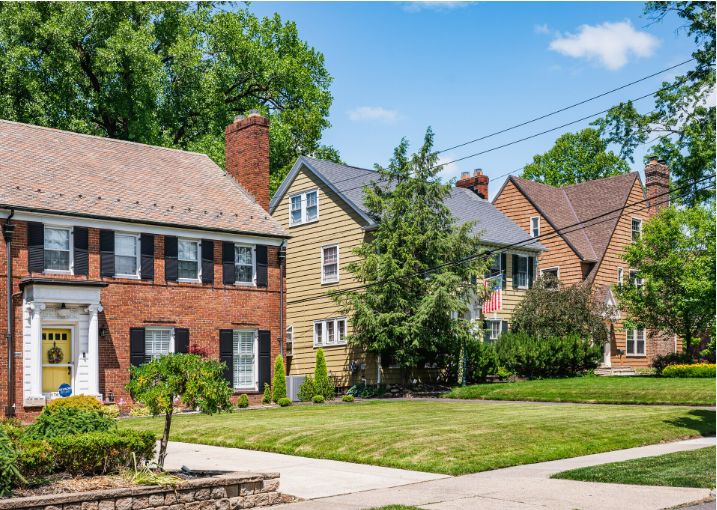All You Need to Know about Case-Shiller Index

In a market characterized by limited inventory and persistently high mortgage rates, housing prices in the U.S. continue to climb. According to the latest S&P CoreLogic Case-Shiller U.S. National Home Price NSA Index, released on June 25, 2024, annual home-price growth surged by 6.3 percent in April 2024. This marks a new all-time high, surpassing the previous record set just a month earlier.
Case-Shiller Index still rising
Alongside the overall increase of 6.3 percent, April’s figures also showed annual growth for both of Case-Shiller’s composite indices: the 10-city index rose by 8.0 percent, while the 20-city index climbed by 7.2 percent.
“For the second month in a row, our national index has jumped over 1 percent above its previous all-time high,” stated Brian D. Luke, head of commodities, real & digital assets at S&P Dow Jones Indices. “2024 is mirroring the strong start we saw last year, with March and April recording significant rises before a typical summer and fall slowdown. As we approach summer, the market is reaching new heights, once again demonstrating its resilience during this historically active season.”
Regional fluctuation continues
The Northeast continues to lead the nation in price growth. “For the past nine months, the Northeast has been the top-performing market,” Luke noted. “It’s been over a year since the leading region has come from the South or West.”
Thirteen markets have reached individual all-time highs, with some cities experiencing more significant increases than others. San Diego emerged as the standout, being the only city to achieve double-digit growth. “San Diego once again takes the lead, with the highest annual returns for the last six months,” Luke remarked.
The top five increases are:
- San Diego (10.3 percent)
- New York (9.4 percent)
- Chicago (8.7 percent)
- Los Angeles (8.6 percent)
- Cleveland (8.5 percent)
In contrast, Denver and Portland recorded the slowest growth rates at 2.0 percent and 1.7 percent, respectively.
The Fed and the housing market

The Federal Reserve’s aggressive actions to tackle inflation, including 10 consecutive rate hikes throughout 2022 and 2023, have driven mortgage rates upward, despite a decline in inflation. Although the Fed doesn’t directly set mortgage rates, the mortgage market reacts to its decisions, affecting the cost of home loans.
The era of low mortgage rates following the Great Recession ended in 2022. In June of that year, rates exceeded 6 percent for the first time since 2008, continuing to rise until they peaked at a 23-year high of 8 percent in October. Steve Reich, VP of operations at CrossCountry Mortgage in Pennsylvania, notes that these trends have significantly impacted the housing market. “As the Fed sought to control inflation, higher interest rates reduced what many homebuyers could afford, leading to a slowdown in home sales,” he explained.
Additionally, rising rates exacerbate the housing shortage by discouraging homeowners from selling their properties, thereby keeping those homes off the market and limiting available housing supply.
“The dramatic increase in mortgage rates is like a set of golden handcuffs,” says Mark Hamrick, Bankrate’s senior economic analyst. He adds that higher rates restrict both the desire and ability of homeowners to move, further tightening housing inventory and worsening the supply issue.
While rates are no longer at the 8 percent mark, they remain high. As of June 19, 2024, the average 30-year mortgage rate stood at 7.03 percent.
What the Case-Shiller Index means for homebuyers and sellers
The current real estate market presents challenges for both buyers and sellers, and unless there’s a significant decrease in home prices or mortgage rates, both parties will need to adapt. “For sellers, the new reality requires flexibility on pricing due to the considerable challenges brought about by rising mortgage rates,” says Hamrick.
He advises that motivated buyers should be prepared for the increased costs of financing. This might mean considering smaller or less expensive homes or different neighborhoods to find an affordable option.
Reich points out that despite the difficulties, purchasing a home is still feasible. “The average time that listings stay on the market is increasing, leading to a slightly less competitive environment,” he notes. Data from the National Association of Realtors supports this, showing that the median days-on-market rose to 24 days in May, up from 18 days a year earlier. This extended timeframe allows buyers more opportunity to make informed decisions, which is encouraging news for those still in the market.
